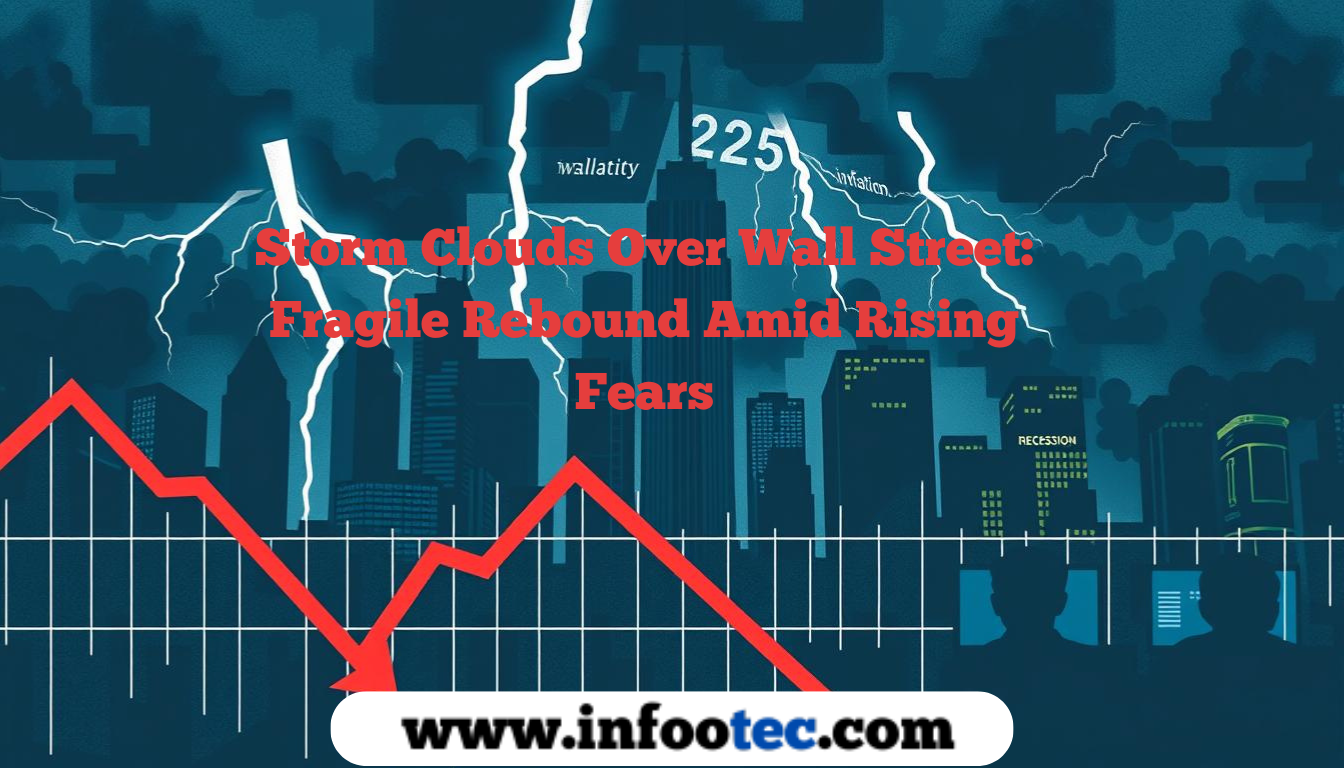Storm Clouds Over Wall Street: Fragile Rebound Amid Rising Fears
After a rocky start to April, U.S. stock markets witnessed a fragile rebound this week, driven by investor optimism over potential de-escalation in trade tensions with China and stronger-than-expected corporate earnings. However, beneath the surface of this modest recovery lies a much more troubling reality—one of persistent market volatility, weakened investor confidence, and a looming threat of recession.
A Fragile Rebound

On Tuesday, April 22, the Dow Jones Industrial Average rose by 2.7%, the S&P 500 gained 2.5%, and the Nasdaq Composite added 2.7%. This marked a rare moment of relief for investors after weeks of turbulence. Shares of major corporations like 3M, Equifax, and Lockheed Martin reported earnings that beat analysts’ expectations, helping lift sentiment across the board.
Moreover, reports emerged that diplomatic backchannels between the U.S. and China had reopened, raising hopes that further tariff hikes might be paused or even rolled back. This prospect helped fuel a temporary rally in equities, particularly in sectors like technology and manufacturing, which are sensitive to trade flows.
Market Losses Still Weigh Heavy
Despite Tuesday’s gains, the overall performance of the markets in April remains dire. The S&P 500 is on track for its worst monthly performance since 2022, while the Dow is facing its bleakest April since 1936. These statistics underscore the deep uncertainty that continues to haunt investors.
Volatility indices like the VIX remain elevated, suggesting that traders still expect significant swings in the market ahead. Factors contributing to this volatility include slowing economic growth, higher interest rates, and unresolved geopolitical tensions—not just with China, but also in regions such as Eastern Europe and the Middle East.
Underlying Economic Weakness
Macroeconomic indicators are painting a sobering picture. The International Monetary Fund (IMF) recently cut its forecast for U.S. growth in 2025 to 1.8%, down from 2.8% in 2024. The downgrade is attributed to a combination of prolonged trade disputes, weakening consumer demand, and reduced capital investment from businesses.
Retail sales have slowed notably, and manufacturing indices have fallen into contraction territory. Meanwhile, housing starts and construction activity have also cooled, suggesting that sectors traditionally viewed as economic bellwethers are beginning to lose momentum.
Rising Fears of Recession
Analysts at Citigroup have increased their estimate of a recession occurring within the next 12 months to 45%. The warning stems from a confluence of risk factors: restrictive monetary policy, fragile global demand, and ongoing domestic political gridlock.
Surveys of corporate executives suggest deteriorating business confidence. In earnings calls this quarter, more CEOs have expressed caution or outright pessimism than at any time since the global financial crisis of 2008. Many firms are delaying capital expenditures and hiring decisions in anticipation of further economic headwinds.
The Fed’s Delicate Balancing Act
The Federal Reserve finds itself in a challenging position. With inflation still above its 2% target, the central bank is reluctant to cut rates too quickly, fearing that doing so could reignite price pressures. However, maintaining elevated interest rates risks exacerbating the economic slowdown.
Fed Chair Jerome Powell has emphasized the need for a “data-driven” approach. Still, political pressure is mounting, especially from the White House, to act more aggressively in support of growth.
Investor Sentiment and the Road Ahead
Market strategists are divided. Some believe that the recent dip in equity prices represents a buying opportunity, arguing that much of the bad news is already priced in. Others caution that without a clear catalyst for recovery—such as a definitive trade agreement with China or a sharp drop in inflation—markets could slide further.
For now, cautious optimism seems to be the prevailing sentiment. Investors are closely watching upcoming data releases, particularly GDP growth for Q1, employment numbers, and inflation trends. The next few weeks could determine whether the markets stabilize or enter another prolonged period of decline.
Conclusion
The brief rally seen in U.S. financial markets offers some respite, but it is hardly a sign of lasting recovery. With economic indicators turning south and recession fears mounting, both policymakers and investors face an uncertain and potentially turbulent remainder of the year.
While hope remains for diplomatic progress and economic resilience, the reality is clear: storm clouds continue to hover over Wall Street.



